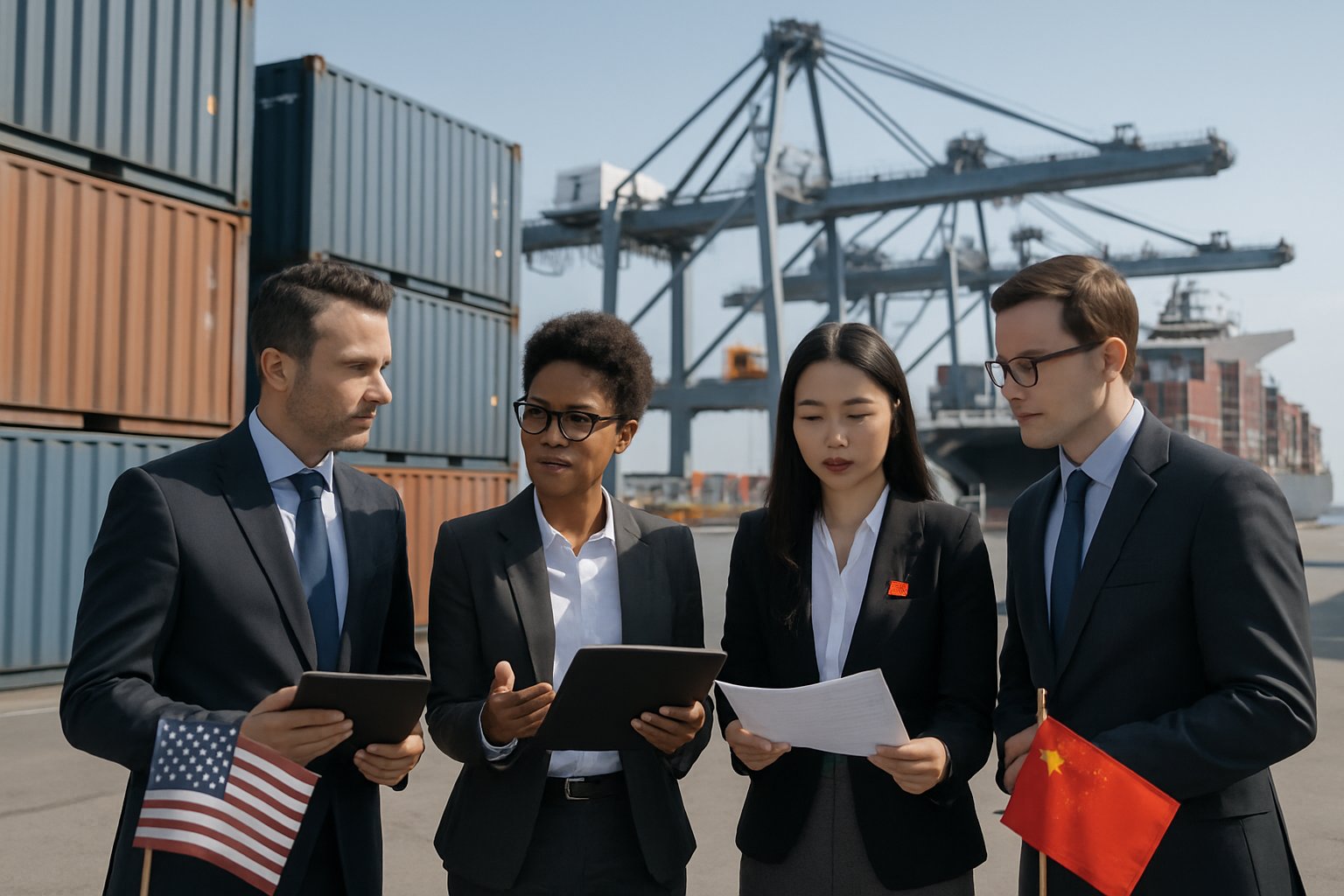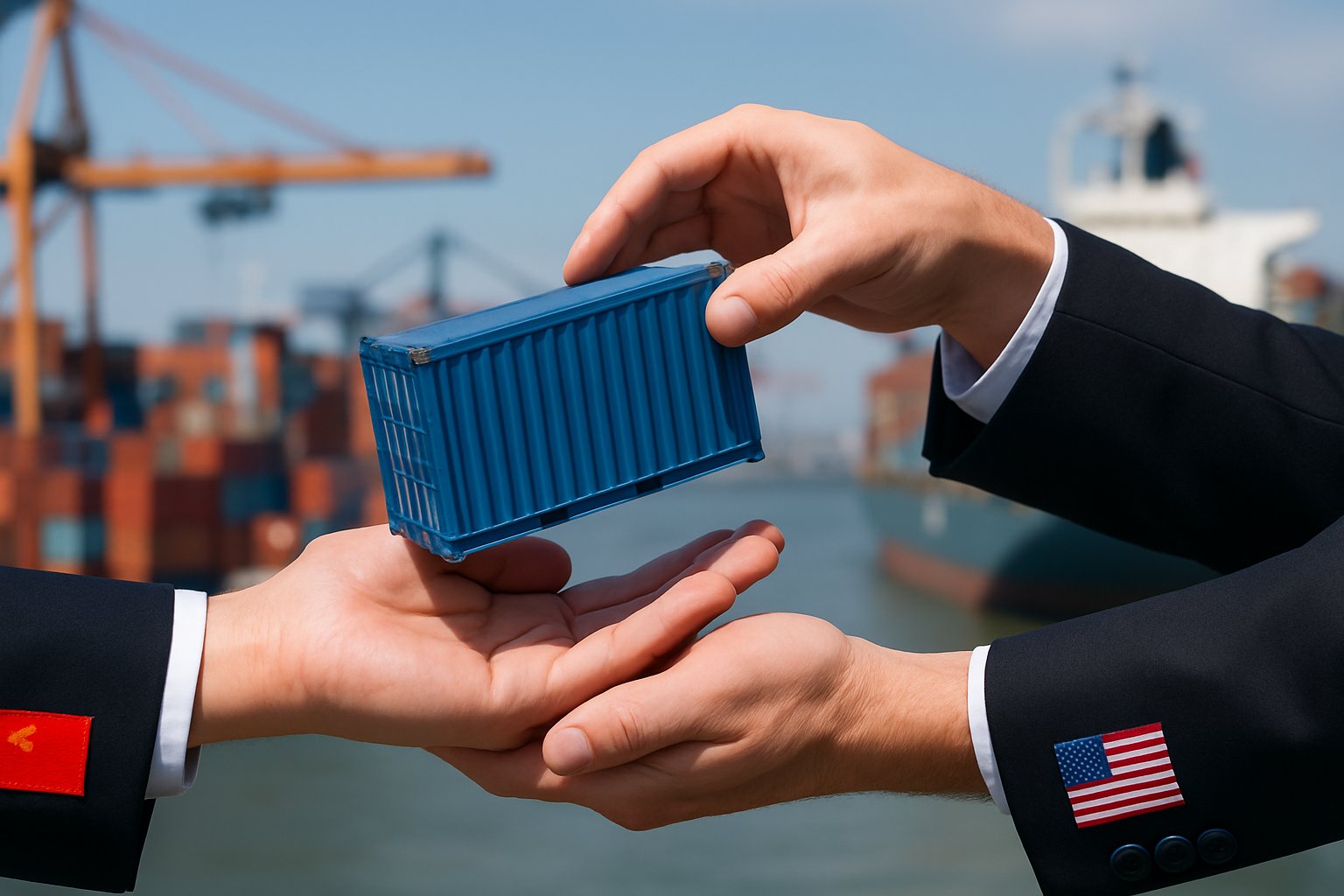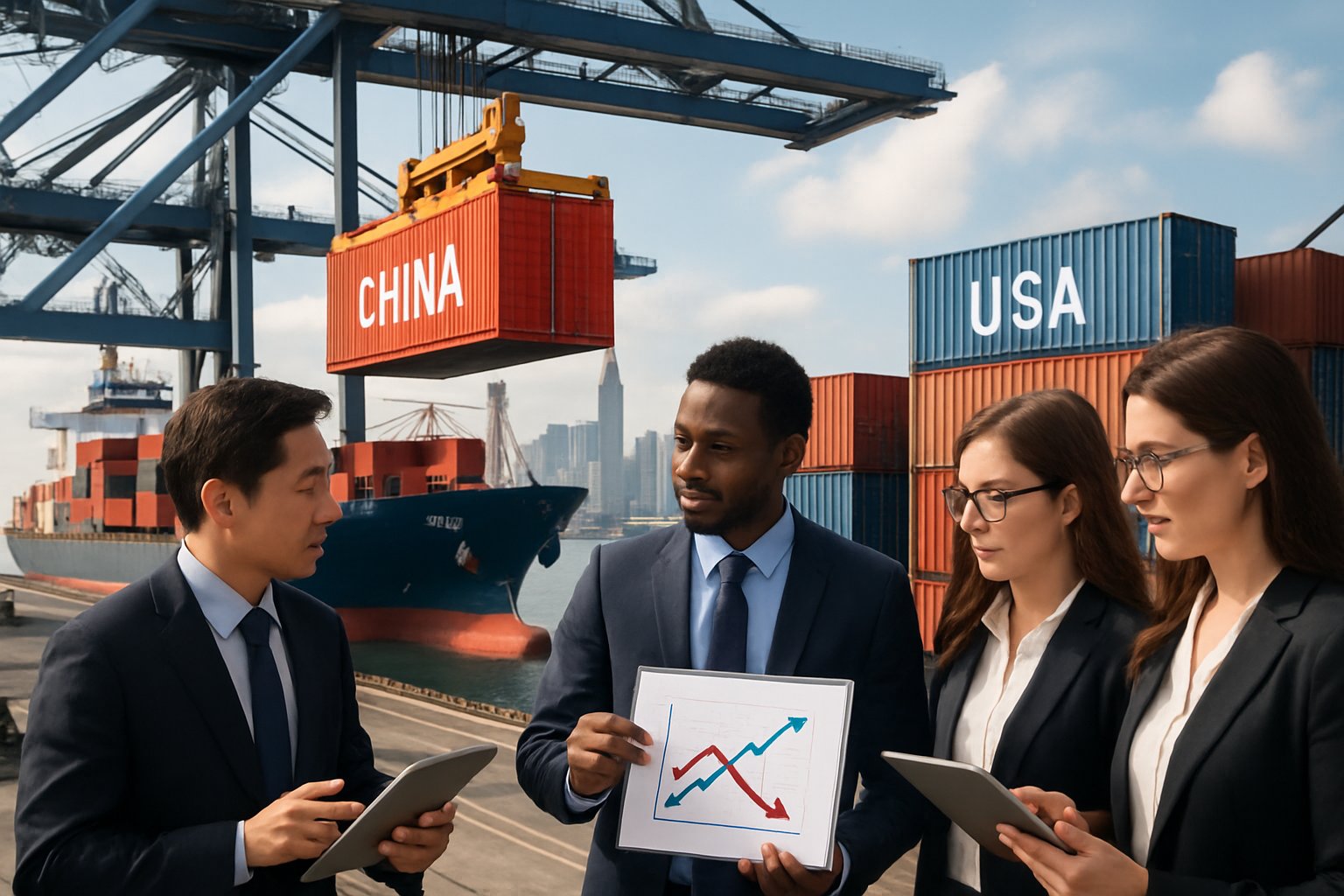In 2025, importing from China to the U.S. means navigating a shifting web of tariffs. The U.S. now applies hefty duties including a 20% “fentanyl” tariff, Section 301/232 levies, and a new “reciprocal” tariff, which briefly peaked at 125%.
On top of that, the de minimis exemption for shipments under $800 from China and Hong Kong was removed as of May 2—so even small packages may be taxed.
These tariffs include a base rate, plus extra duties linked to past trade disputes. For many Chinese goods, this pushes the total import tax to 34% or even higher.
Navigating these updates means you need to know the broad scope of tariffs that impact different product categories. You also have to watch out for possible reciprocal actions from China.
Import Tax From China To USA In 2025

When you import goods from China to the USA in 2025, you face a layered and often high tariff system. The rates change depending on the product type, and many products come with extra fees beyond the base tariffs.
Knowing these details helps you calculate costs more accurately and prepare your budget for shipping from China.
What’s the Current Tariff Rate on Chinese Goods?
In 2025, the main tariff rate on imports from China sits at about 34% ad valorem. This combines the baseline U.S. tariff with additional duties under Section 301, which targets goods tied to trade imbalances or unfair practices.
You might also run into other fees, like customs processing costs and extra taxes based on the product category. This layered system means your total import tax can be a lot higher than just the listed rate.
Some imports from China get different charges depending on their classification under U.S. customs rules. This whole structure is a result of ongoing trade tensions and new policy tweaks.
How Tariffs Apply Differently by Product Type
Tariffs aren't the same for every product. For example:
- Electronics and tech products can have higher rates because of trade restrictions and extra Section 301 duties.
- General consumer goods often get the standard 34% tariff, but some have exemptions depending on specific trade agreements.
- Autos and metals from China face separate tariffs and can be affected by recent trade updates.
You should check the product-specific Harmonized Tariff Schedule (HTS) codes to find the exact duty rates per item. Some categories come with extra fees or partial exemptions.
Shipping from China involves these uncertainties. If you classify your product correctly and understand its tariff category, you might avoid some unexpected import taxes.
Curious how investing in China affects your returns? Read China Capital Gains Tax: A Comprehensive Guide.
Tariff Rates by Product

When you import from China to the USA in 2025, expect different tariff rates depending on the product. These rates shape your total cost and can jump around, especially for electronics, apparel, and metals.
Electronics, Apparel, Metals: Rate Summary
Electronics, including semiconductors, usually get tariffs around 25% to 30%. Some high-tech items like electric vehicles have unique tariffs or sometimes exemptions if recent trade agreements apply.
Apparel imports generally face tariffs near 16%, but the rate can climb if the product falls under certain subcategories or gets hit with anti-dumping duties.
Metal products, especially steel and aluminum, often get tariffs near 34% because of Section 232 national security measures. Medical equipment usually has lower tariffs or exemptions, but some specialized devices still face duties.
Get ready to navigate multiple tariff layers for some goods. Extra Section 301 tariffs can stack on top of base rates and really drive up your import costs.
Small Parcels vs Shipments & De Minimis Rules
Your tariff liability changes depending on how your goods arrive. Small parcels shipped by courier (like international packages under a certain value) might qualify for the de minimis exemption, which lets imports valued under $800 enter duty-free and tax-free.
This exemption doesn't apply to larger commercial shipments. If your shipment goes over the de minimis limit, you pay tariffs and customs duties in full.
Some people try to break down orders into small parcels to cut fees, but that can increase shipping complexity and might catch the attention of customs.
Certain products, like high-value electronics or medical devices, still require detailed customs documentation no matter the parcel size.
Knowing these rules helps you optimize shipping strategies and avoid surprise import taxes.
Wonder how the tax treaty affects your cross-border income? Read China-America Tax Treaty: Everything You Need to Know.
Recent Tariff Changes & Truces

Importing goods from China to the U.S. in 2025 means dealing with a mix of tariffs. Early in the year, baseline tariffs changed, and a big tariff pause followed a period when duties soared as high as 145%.
“Liberation Day” 10–30% Baseline Tariffs
In April 2025, the U.S. rolled out the so-called “Liberation Day” tariffs, raising import taxes to between 10% and 30% on many Chinese products. This hike stacked on top of existing Section 301 tariffs, which already covered a wide range of goods.
Small and midsize businesses took a hit, facing higher costs and fewer options for exclusions. The tariffs targeted certain sectors with countervailing duties on items the U.S. saw as unfairly subsidized by the Chinese government.
Imports from Hong Kong got stricter rules, reflecting a tougher trade stance overall. Some products still qualified for Section 301 exclusions, but these became harder to get as the year went on.
April Spikes & May Geneva Deal: 145% → ~55%
Before May, some tariffs on Chinese imports hit historic highs—up to 145% on certain items. These spikes followed a string of retaliatory tariffs between the U.S. and China as trade tensions escalated. Sensitive sectors like technology and semiconductors got hit especially hard.
In May 2025, a truce in Geneva led to a 90-day tariff pause. The deal dropped the highest tariffs from 145% down to an average near 55%. The U.S. brought its blanket tariffs on Chinese goods to about 30%, and China matched that move on U.S. imports.
This rollback made imports a bit more affordable, but many goods still face layered duties because of ongoing retaliatory tariffs and complicated tariff codes. The agreement opened space for more trade talks, but uncertainty still hangs in the air.
Running a business in China? Read China's Corporate Tax Rate: Overview and Recent Changes.
Cost Impact & Sourcing Shift
Higher tariffs on imports from China to the USA in 2025 have pushed costs up and forced a lot of businesses to rethink where they buy goods. These changes ripple through consumer prices and supply chains alike.
Consumer Prices & Supply-Chain Rerouting
You'll probably notice higher prices on everyday stuff like electronics, clothing, and kitchenware because of added import taxes. The U.S. now applies tariffs up to 34% on goods from China, plus extra fees, which bump up the cost of shipping and handling.
Many businesses are moving away from China to dodge these costs. They're turning to suppliers in countries like Vietnam, Mexico, and India.
This shift means supply routes are getting longer or more complicated, which can increase logistics costs. You might see delays or changes in product availability as companies scramble to adjust.
Thinking of investing in Chinese real estate? Read China Property Tax: Implications and Economic Impact.
Compliance & Saving Tips
If you want to manage import taxes well, you need to understand customs duties, proper product classification, and the tools available to you. Accurate paperwork and smart planning can lower your costs and help you avoid delays.
De Minimis Thresholds, HS Codes & Duties Prep
The de minimis threshold lets you bring in goods below a certain value without paying tariffs. In the U.S., that's generally $800. Shipments under this amount are usually exempt from customs duties, but you still need to get the paperwork right.
Use the Harmonized Tariff Schedule (HTS) to classify your products accurately. The right HS code sets the duty rate and tells you if extra tariffs apply, like Section 301 tariffs on some China imports.
Work closely with your customs broker or customs brokerage firm. They can help you file forms correctly with U.S. Customs and Border Protection (CBP). If you know your importer of record role, you'll avoid expensive mistakes or customs holds.
Using Carriers’ Tools (UPS Surcharge Example)
Carriers like UPS have tools that help you estimate import costs, including duties, taxes, and surcharges. UPS, for instance, charges extra for customs brokerage services, which can add $30 or more per shipment.
Using carrier calculators in advance lets you see total charges and pick cost-effective shipping options. Some carriers offer pre-clearance service, which speeds up customs entry and reduces delays.
Brokerage fees are separate from customs duties, so keep that in mind. Planning for these helps you keep your supply chain moving and your costs transparent. Always check fees directly with your carrier to avoid surprises.
What’s Ahead?
You need to keep an eye on key tariff deadlines and any changes that might hit your import costs. Planning ahead feels more important than ever if you want to protect your budget and avoid nasty surprises for your business.
Tariff Deadlines Aug 2025 & Possible Hikes
The tariff reduction period kicked off on May 14, 2025, and wraps up on August 11, 2025.
After that date, the U.S. and China might bump tariffs back up or tweak rates, depending on how trade talks go.
At the moment, the U.S. slaps a 34% ad valorem tariff on a lot of Chinese products, and there are extra fees under Section 301 too.
Some tariffs could climb again after August if the two sides don’t strike a new deal.
Keep an eye on government updates—delays or last-minute extensions can pop up, but there’s no promise they will.
Electronics, autos, and metals seem to carry the highest risk for bigger duties.
How to Budget & Hedge Future Import Costs
It’s smart to factor possible tariff hikes into your cost plans now. Play it safe. Assume tariffs might bounce back to 40-50% on key goods after August 2025, so you’re not caught off guard.
If you can, try advance purchasing or lock in longer contracts at today’s rates. Look into tariff classification and country-of-origin strategies to cut duties legally.
Some companies spread out risk by sourcing from outside China or working with customers to share extra costs. Financial hedging tied to currency and commodity prices can help soften sudden cost jumps.
Staying on top of policy news helps you move fast when things shift.
Final Thoughts
Importing from China to the USA in 2025 is more complex than ever due to layered tariffs. While base reciprocal tariffs were reduced to 10%, new “fentanyl” tariffs of 20% remain, and the de minimis exemption for low‑value parcels is now 54%, not duty‑free.
Without careful planning, these layers can add 30‑50%—or more—to costs. Strategically using correct HS codes, formal entries, and shipping through commercial carriers can help.
But act fast—the 90‑day tariff pause may end by August 2025 . With the right prep, you can still import smart and cost‑effectively. Contact China Legal Experts to guide you through the legal maze.
Working remotely for a US company from China? Read Do I Need to Pay Taxes in China If I Work Remotely?.
Frequently Asked Questions
What is the import tariff rate in China 2025?
The U.S. is charging a 34% ad valorem tariff on imports from China right now. Section 301 tariffs and other fees pile on, making Chinese goods a lot pricier.
Will China extend tariff exemptions for some US products to 2025?
China’s tariff exemptions for certain U.S. products ended earlier this year. Most American goods now face tariffs going into China, thanks to ongoing trade friction and shifting policies.
How does customs duty in the USA apply to Chinese imports this year?
U.S. customs duty on Chinese imports includes the 34% ad valorem tariff and sometimes Section 301 fees.
You’ll need to pay these based on the product’s declared value before customs releases your goods.
Do I need to pay import tax from China?
Yes, you do—if you’re importing from China, you have to pay the required tariffs and duties. Taxes vary by product, but they’re mandatory and will impact your final costs and pricing.
What to import from China in 2025?
Electronics accessories, textiles, packaging, and furniture pop up as some of the most common imports.
But with those high tariffs, you’ll want to crunch the numbers on duty costs first. Otherwise, profitability might slip right through your fingers.
Subscribe to receive updates
Subscribe to receive the latest blog posts to your inbox every week.



